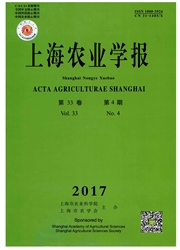

 中文摘要:
中文摘要:
以皖南文化旅游示范区为例,基于新型城镇化内涵分析基础之上构建新型城镇化测度指标体系,运用熵值法测度研究区新型城镇化水平;并通过ESDA分析模型探讨2000—2012年皖南文化旅游示范区新型城镇化时空格局演变特征.结果表明:2000—2012年研究区新型城镇化水平在[0.401,0.711]范围内波动,总体上呈现出上升趋势;CV(变异系数)持续提升也表明新型城镇化的区域差异不断显著;全局上皖南文化旅游示范区新型城镇化表现出正的自相关性特征,但空间集聚程度相对较弱;局部上将皖南文化旅游示范区新型城镇化划分为4种基本类型,其中新型城镇化H-H区主要集聚在"芜-马"核心区,并逐渐向铜陵等地演化;而LL区主要分布在岳西县、太湖县、宿松县、望江县、东至县、祁门县等县,并且维持较稳定的空间分异格局.
 英文摘要:
英文摘要:
Taking the culture tourism demonstration area in southern Anhui as the research object,the paper established index system of new urbanization system,using the entropy model to measure the value of new urbanization; based on ESDA analysis model to reveal spatial pattern evolution of new urbanization from 2000 to 2012.The results showed that new urbanization of cultural tourism demonstration area in southern Anhui generally presented rising trend,and new urbanization level fluctuations was within [0. 401,0. 711 ]; CV ascension also showed that the regional difference of new urbanization was significantly; New urbanization had a positive correlation with spatial cluster phenomenon. The degree of spatial agglomeration was relatively weak. Locally,new urbanization was divided into four basic types. New urbanization H- H areas were mainly located in Wuhu and Maanshan,and new urbanization L- L areas were mainly located in Yuexi,Taihu,Susong,Wangjiang,Dongzhi,Qimen,which maintained relatively stable spatial differentiation pattern.
 同期刊论文项目
同期刊论文项目
 同项目期刊论文
同项目期刊论文
 期刊信息
期刊信息
